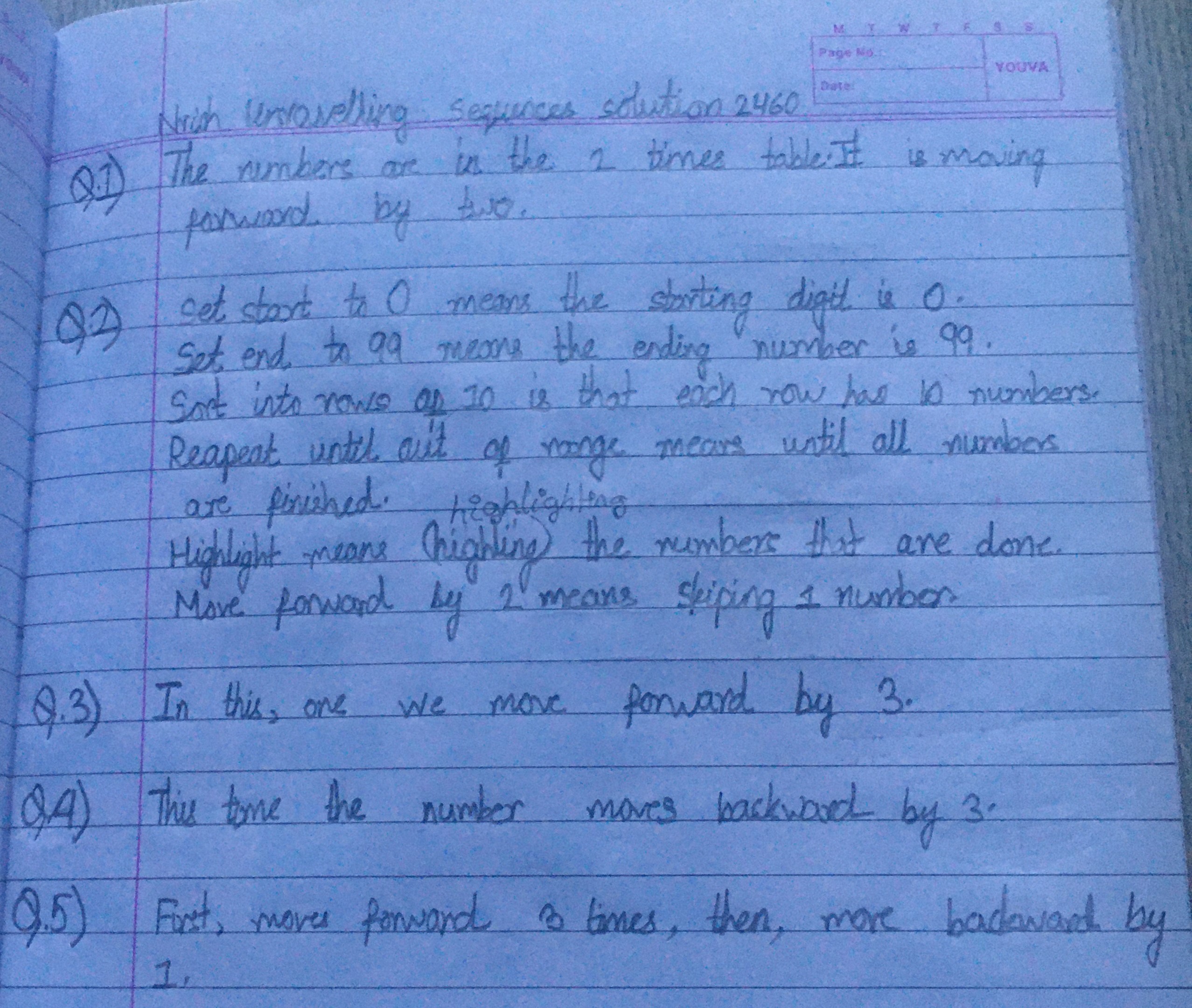Or search by topic
Number and algebra
Geometry and measure
Probability and statistics
Working mathematically
Advanced mathematics
For younger learners
Unravelling Sequences



- Problem
- Getting Started
- Student Solutions
- Teachers' Resources
Perri-Jane from Halstead Preparatory School in England explored the first Number Jumper sequence:
This number jumper only highlights even numbers 2,4,6,8,10,12,14... and it goes on until 98. This number sequence shows a pattern of 10 blue rows. When I looked at the coding, you can see it highlights, then adds 2, so for example; you have the number 2, highlight it, +2. Now it said repeat, meaning it will keep repeating from 1-99 (as it said at the start of the algorithm)
Well done for exploring the code in the left-hand panel. How is this different for the other Number Jumper sequences?
Dhruv from St. Anne's RC Primary School in the UK sent in this solution:
Well done for working out what happens in each Number Jumper sequence. How could you describe each sequence of numbers? Are they similar to any times tables?
You may also like
Add 3 Dice
Three dice are placed in a row. Find a way to turn each one so that the three numbers on top of the dice total the same as the three numbers on the front of the dice. Can you find all the ways to do this?
Online
A game for 2 players that can be played online. Players take it in turns to select a word from the 9 words given. The aim is to select all the occurrences of the same letter.


